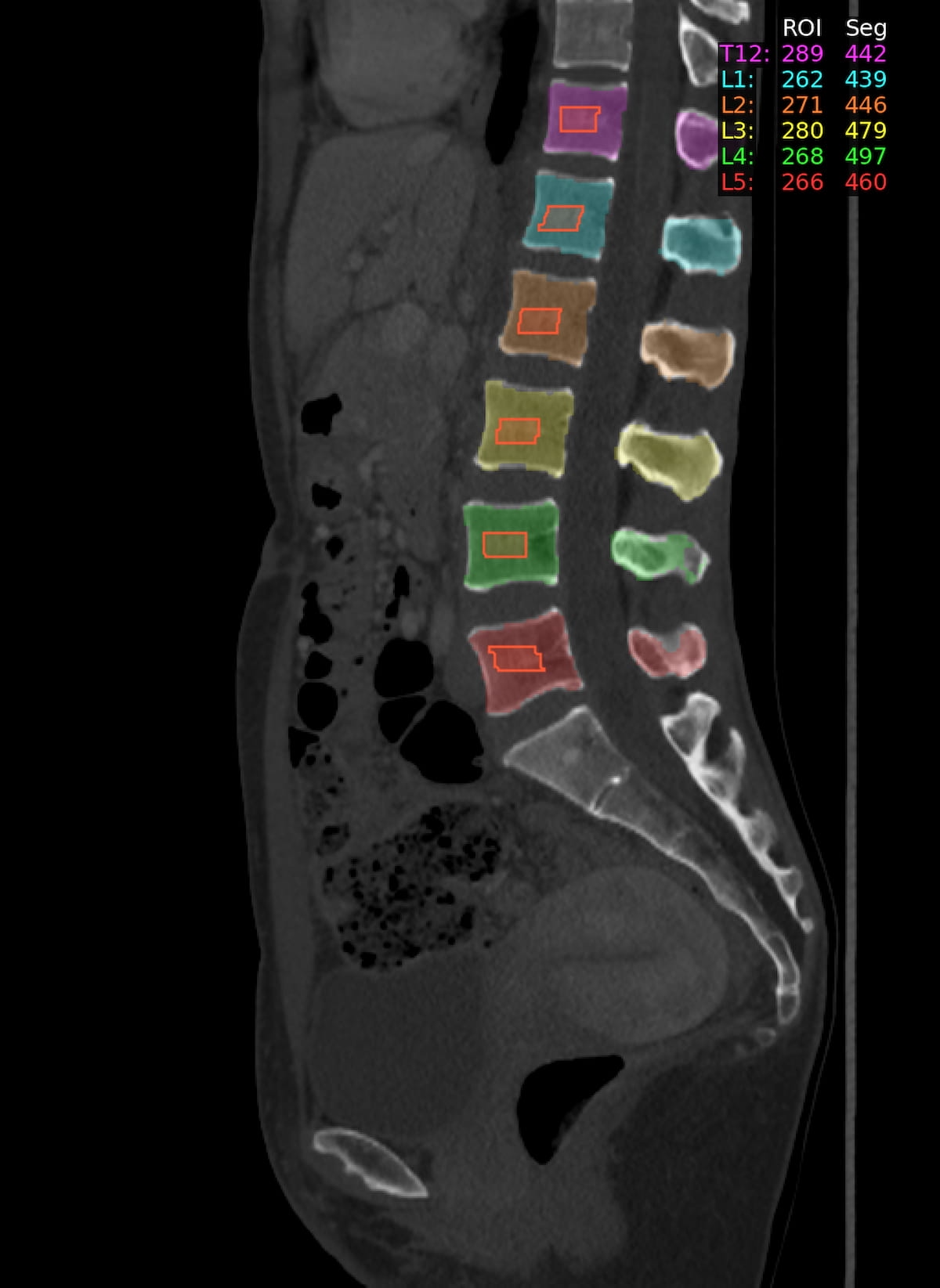FDA Clears AI-Powered Bone Mineral Density Assessment from Abdominal CT Scans
The Bunkerhill BMD software provides AI-automated assessment of bone mineral density from non-contrast abdominal computed tomography scans.
The Food and Drug Administration (FDA) has granted 510(k) clearance for the artificial intelligence (AI)-enabled Bunkerhill BMD software, which provides automated bone mineral density (BMD) assessments of non-contrast abdominal computed tomography (CT) scans.
Cleared for use in adults 30 years of age and older, the Bunkerbill BMD software offers evaluation of spinal bone structures from abdominal CT scans without the need for additional imaging hardware or radiation exposure, according to Bunkerhill Health, the distributor of the software.
The AI-powered Bunkerhill BMD software, which provides automated bone mineral density (BMD) assessments from non-contrast abdominal computed tomography (CT) scans, has garnered 510(k) clearance from the FDA. (Image courtesy of Bunkerhill Health.)

While estimates suggest that osteoporosis affects approximately 200 million worldwide, Bunkerhill Health notes that reportedly fewer than 25 percent of eligible women have BMD testing.
However, Akshay Chaudhari, M.D., who developed the software’s algorithm along with Louis Blankemeier, Ph.D., said Bunkerhill BMD can significantly enhance opportunistic screening and facilitate preventative measures for patients at risk for osteoporosis.
“The ability to assess bone health without additional scans, radiation exposure to patients, and cumbersome manual analysis needed from radiologists represents a paradigm shift in how we think about preventative care,” noted Dr. Chaudhari, an assistant professor of radiology and biomedical data science at Stanford University and co-director of clinical AI at Stanford Radiology. “This algorithm reflects how academic innovation, when paired with thoughtful product development, can deliver tools that are both impactful and scalable.”
Could Lymph Node Distribution Patterns on CT Improve Staging for Colon Cancer?
April 11th 2025For patients with microsatellite instability-high colon cancer, distribution-based clinical lymph node staging (dCN) with computed tomography (CT) offered nearly double the accuracy rate of clinical lymph node staging in a recent study.
AMA Approves Category III CPT Codes for AI-Enabled Perivascular Fat Analysis from CT Scans
April 9th 2025Going into effect in 2026, the new CPT codes may facilitate increased adoption of the CaRi-Heart software for detecting coronary inflammation from computed tomography scans pending FDA clearance of the technology.
FDA Clears AI Assessment of Ischemic Core Volume on CT with Brainomix 360 Platform
April 8th 2025For patients with acute ischemic stroke, research has demonstrated that automated assessment of ischemic core volume on brain CT scans via the Brainomix 360 software is equivalent to that derived from CT perfusion.
What New Research Reveals About Novice Use of AI-Guided Cardiac Ultrasound
April 4th 2025In a study recently presented at the American College of Cardiology (ACC) conference, researchers found that novice use of AI-guided cardiac ultrasound after an AI-enabled electrocardiogram increased the positive predictive value for reduced left ventricular ejection fraction (LVEF) or aortic valve stenosis by 33 percent.